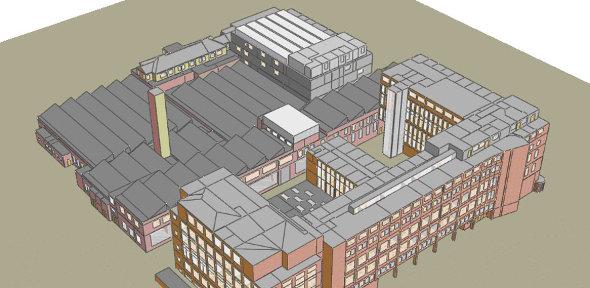
Adam Booth, a recent engineering graduate, has created a computer model of the Department that is able to simulate how energy is used in the buildings and predict the effect of proposed changes.
Adam began creating the model as part of his fourth-year project, entitled "Modelling and Simulation of Building Physics", which was supervised by Allan McRobie of the Civil, Structural, Environmental and Sustainable Development Division. The project concentrated on improving the thermal comfort of office spaces in the Department and looked at measures for reducing the heating demand for these areas, such as superior glazing or heat-recovery ventilation systems. Adam's project also investigated the cost-effectiveness of these technologies, and put the need for energy efficient buildings into the wider context of combating climate change.
The thermal model of the Department built by Adam uses commercially available software called "Virtual Environment" by the company Integrated Environmental Solutions, which is used by many engineering companies to predict the environmental performance of buildings that they are designing. Adam learnt how to use this software during previous summer work placements at building services company Zisman Bowyer and Partners, and more recently at engineering consultancy Buro Happold.
Many people were very impressed by the work done by Adam for his fourth-year project, including EMBS (the University estate managers) and David Green, who is in charge of building services within the Department. As a result, Adam was commissioned by the Department to undertake further investigations over the 2009 summer holiday period into the energy use on the Trumpington Street site.
The investigation concentrated on four case studies within the Department, with an analysis of various ways of reducing the demand for heating and improving the energy efficiency in large spaces such as lecture rooms and laboratories. It was found that in most areas of the Department, energy use for heating could be reduced by 50% with fairly well-established technologies. The results of these investigations are now being used to inform key decision makers on how to invest in future work on the Department buildings and make the Department a shining example of energy efficiency.
Adam has gone on to start a PhD here as part of the new Energy Efficient Cities Initiative (EECi), under the guidance of Dr. Ruchi Choudhary, in which he will be investigating building technologies as part of a multidisciplinary team that aims to strengthen the UK's capacity to address energy demand reduction and environmental impact in cities.

